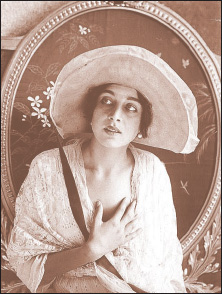 krainian Tango
krainian TangoThe U krainian Tango
krainian Tango
One hundred
years ago, the Argentine tango El Choclo by Angel Villoldo was published
in
The tango entered
the Russian Empire through
Meanwhile,
Isa Kremer (1887-1956) was singing Le Dernier Tango by the Frenchman mile
Doloire in Odesa. This inspired a film to be made in 1918 – Последнее танго (The Last Tango)
starring
But all this
bourgeois culture came to an end when Joseph Stalin came to power. With the slogan
Смерть Буржуазии (Death to the Bourgeoisie), the Communist Revolution continued to eradicate
the middle-class with its urban culture – even the movies of Vira Kholodna were
destroyed in 1924. Fortunately, a short clip, only a few minutes long, has survived
to tantalize us today. On the basis of such fragmentary evid-ence, the early years
of the Ukrainian tango have been reconstructed.
Musicologist
Wasyl Sydorenko will share this remarkable story of the Ukrainian tango in a multimedia
presentation as part of his Circle of Fifths lecture series at St. Vladimir
Institute, 620 Spadina Avenue, Toronto on Friday, February 25 at 7:00
pm. Admission is pay what you can to cover the cost of the refreshments provided
by the Institute.
The evening
will include rare photographs, music scores, record-ings and movie clips. Despite
Stalin, the Ukrainian tango survived, often outside the borders of
PHOTO
Vira Kholodna